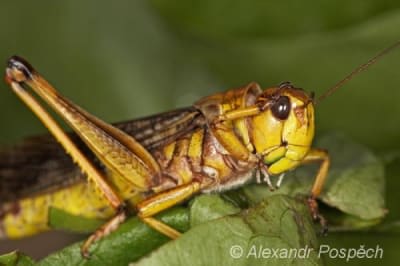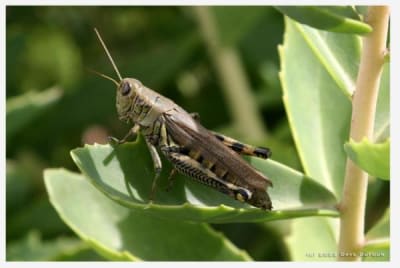الطير الماشي علي اربع.. هل يوجد طير يمشي على اربعة ارجل؟
 الشبهة:الطير الماشي علي اربع
الشبهة:الطير الماشي علي اربع(الفانديك)(اللاويين)(Lv-11-20)(. وكل دبيب الطير الماشي على اربع فهو مكروه لكم.)
ما معنى كلمة طائر وما هو التقسيم العلمي للطيور.
الطيور هي تقسيم من المملكة الحيوانية اي الطيور هي نوع من الحيوانات ويوجد تقسيم للطيور.
فهل هناك انواع من الطيور تسير على اربع؟
الرد
وللرد ابدا اولا بقراءة الايات13 وَهذِهِ تَكْرَهُونَهَا مِنَ الطُّيُورِ. لاَ تُؤْكَلْ. إِنَّهَا مَكْرُوهَةٌ: اَلنَّسْرُ وَالأَنُوقُ وَالْعُقَابُ
14 وَالْحِدَأَةُ وَالْبَاشِقُ عَلَى أَجْنَاسِهِ،
15 وَكُلُّ غُرَابٍ عَلَى أَجْنَاسِهِ،
16 وَالنَّعَامَةُ وَالظَّلِيمُ وَالسَّأَفُ وَالْبَازُ عَلَى أَجْنَاسِهِ،
17 وَالْبُومُ وَالْغَوَّاصُ وَالْكُرْكِيُّ
18 وَالْبَجَعُ وَالْقُوقُ وَالرَّخَمُ
19 وَاللَّقْلَقُ وَالْبَبْغَا عَلَى أَجْنَاسِهِ، وَالْهُدْهُدُ وَالْخُفَّاشُ.
20 وَكُلُّ دَبِيبِالطَّيْرِ الْمَاشِي عَلَى أَرْبَعٍ. فَهُوَ مَكْرُوهٌ لَكُمْ.
21 إِلاَّ هذَا تَأْكُلُونَهُ مِنْ جَمِيعِ دَبِيبِالطَّيْرِ الْمَاشِي عَلَى أَرْبَعٍ: مَا لَهُ كُرَاعَانِ فَوْقَ رِجْلَيْهِ يَثِبُ بِهِمَا عَلَى الأَرْضِ.
22 هذَا مِنْهُ تَأْكُلُونَ: الْجَرَادُ عَلَى أَجْنَاسِهِ، وَالدَّبَا عَلَى أَجْنَاسِهِ، وَالْحَرْجُوانُ عَلَى أَجْنَاسِهِ، وَالْجُنْدُبُ عَلَى أَجْنَاسِهِ.
23 لكِنْ سَائِرُ دَبِيبِالطَّيْرِ الَّذِي لَهُ أَرْبَعُ أَرْجُل فَهُوَ مَكْرُوهٌ لَكُمْ.
ورغم ان العدد يتكلم بوضوح عن الحشرات ولكن لمن يصر بعناد ان الاية تتكلم عن الطيور ليس عن الحشرات فالرد هو ان يوجد طيور تسير علي اربع مثل الاتي.
السنجاب الطائر
Flying Squirrel
الذي له القدرة على الطيران من خمسة الى خمسة وعشرين متر وقد تصل الى اربعين متر بالنسبة لطوله الذي هو خمسة وعشرين سم.
وهو يستطيع الطيران لوجود زيادة جلدية بين القدم الامامية وبين الخلفية من كل جانب من جسمه فيستطيع ان يقفز ثم يستمر في الطيران والتزحلق الهوائي لفترة.

 وهنا شرح كامل له
وهنا شرح كامل لهhttps://en.wikipedia.org/wiki/Wikipedia:Citation_needed
Home ranges are up to 40,000 square metres for females and 50 percent higher for males
 A Northern flying squirrel gliding.
A Northern flying squirrel gliding.Northern flying squirrel gliding distances tend to be between 5 and 25 meters, though glides of up to 45 m and longer have been observed. Average glides are about 5 m less for females than for males. Glide angle has been measured at 26.8 degrees and glide ratio at 1.98., width is 4 ft.
When the flying squirrel lands after a glide, it often will move sideways to the opposite side of the tree to escape potential predators that may be in pursuit.[citation needed]
https://en.wikipedia.org/wiki/Northern_Flying_Squirrel
الخفاش والسنجاب الطائر
The sac-winged or sheathtailed bats constitute a family,
https://en.wikipedia.org/wiki/Sac-winged_bat
https://ar.wikipedia.org/wiki/%D8%B3%D9%86%D8%AC%D8%A7%D8%A8
ولكن كما ذكرت ان الكتاب يتكلم عن الحشرات.
وسؤال هنا كيف يستخدم الانجيل كلمة الطير للدلالة على الحشرات؟
دليل كتابي ان الانجيل يتكلم عن الحشرات هو:
يشوع ابن سيراخ 11
3 النحل صغير في الطيور وجناه راس كل حلاوة.
وهو هنا يتكلم فقط عن الحشرات ذات الاربع ارجل للمشي ورجلين للقفز ولم يتكلم عن الحشرات ذات الثمان ارجل او غيرها.
الانجيل واضح في انه اربع ارجل للمشي ورجلين للقفز فهم ستة مثل الجراد.
واي نوع اخر ممنوع.
ونبدا اولا بمعنى دبيب الطير.
المعاجم العربية:
دبب(لسان العرب)
دَبَّ النَّمْلُ وغيره من الحَيَوانِ على الأَرضِ، يَدِبُّ دَبّاً ودَبِيباً:مشى على هِينَتِه.
وقال ابن دريد: دَبَّ يَدِبُّ دَبِيباً، ولم يفسره، ولا عَبَّر عنه.
ودَبَبْتُ أَدِبُّ دِبَّةً خَفِيَّةً، وإِنه لخَفِيُّ الدِّبَّة أَي الضَّرْبِ الذي هو عليه من الدَّبِيبِ.
ودَبَّ الشيخُ أَي مَشَى مَشْياً رُوَيْداً.
وكلُّ ماشٍ على الأَرض: دابَّةٌ ودَبِيبٌ.
والـمَدِبُّ موضعُ دَبِيبِ النَّمْلِ وغيره.
دبب(الصّحّاح في اللغة)
دبَّ على الأرض يَدِبُّ دَبِيباً.
وكلُّ ماشٍ على الأرض دابَّةٌ ودبيبٌ.
هم(مقاييس اللغة)
والهَموم: البئر الكثيرة الماء. قال:والهَميمة: المَطْرَة الخَفيفة، والرِّيح الرَّيْدانة: اللَّيّنة الهبُوب.
والهَوَامّ: حشرات الأرض، سمِّيت لِهميمها، أي دَبِيبها.
فهو يطلق على الحيوان والحشرات ايضا.
الطير
طير(لسان العرب)
الطَّيَرانُ:حركةُ ذي الجَناج في الهواء بِجَنَاحِهِ، طارَ الطائرُ يَطِيرُ طَيْراً وطَيراناً وطَيْرورة؛ عن اللحياني وكراع وابن قتيبة، وأَطارَه وطيَّره وطارَ بِه، يُعَدى بالهمزة وبالتضعيف وبحرف الجر. الصحاح: وأَطارَه غيرُه وطيَّره وطايَرَه بمعنى.
والطَّيرُ معروف اسم لِجَماعةِ ما يَطِيرُ من الحشرات،
أَي ذُهِبَ به بسُرْعَةٍ كأَنَّ الطيرَ حَمَلَتْه أَو اغْتالَهُ أَحَدٌ.
والاسْتِطارَةُ والتَّطايُرُ: التفرُّقُ والذهابُ.
اي هو تعريف لكل من له جناس ويتضمن الطيور والحشرات وكل من يذهب بسرعة.
التراجم الانجليزي
Lev 11:20
(ASV) All winged creeping things that go upon all fours are an abomination unto you.
(BBE) Every winged four-footed thing which goes on the earth is disgusting to you;
(Bishops) Let all foules that creepe and go vpon all foure, be an abhomination vnto you.
(CEV) The only winged insects you may eat are locusts, grasshoppers, and crickets. All other winged insects that crawl are too disgusting for you to eat.
(Darby) Every winged crawling thing that goeth upon all four shall be an abomination unto you.
(DRB) Of things that fly, whatsoever goeth upon four feet, shall be abominable to you.
(ESV) "All winged insects that go on all fours are detestable to you.
(Geneva) Also euery foule that creepeth & goeth vpon all foure, such shalbe an abomination vnto you.
(GNB) All winged insects are unclean,
(GW) "Every swarming, winged insect that walks across the ground like a four-legged animal is disgusting to you.
(JPS) All winged swarming things that go upon all fours are a detestable thing unto you.
(KJV) All fowls that creep, going upon all four, shall be an abomination unto you.
(KJVA) All fowls that creep, going upon all four, shall be an abomination unto you.
(LITV) Every flying swarming creature going on all four, it is an abomination to you.
(MKJV) Every flying swarming creature going on all four, it is an abomination to you.
(RV) All winged creeping things that go upon all four are an abomination unto you.
(SVD)وَكُلُّ دَبِيبِ الطَّيْرِ الْمَاشِي عَلَى ارْبَعٍ. فَهُوَ مَكْرُوهٌ لَكُمْ.
(Webster) All fowls that creep, going upon all four, shall be an abomination to you.
(YLT) `Every teeming creature which is flying, which is going on four--an abomination it is to you.
بمعنى حشرة تطير.
Creep or creeping or creep داب زاحف
Crawling زاحف داب
Insect حشرة
Swarming العج (حشرة )
Creature مخلوق كائن
والنص العبري الماسوريتك
כ כֹּל שֶׁרֶץ הָעוֹף, הַהֹלֵךְעַל-אַרְבַּע--שֶׁקֶץ הוּא, לָכֶם.
20 All winged swarming things that go upon all fours are a detestable thing unto you.
20 kōl ereṣ hāwōf hahōlēḵə al-arəba eqeṣ h lāḵem: s
................................................................................
................................................................................
ויקרא 11:20 Hebrew OT: BHS (Consonants Only)
................................................................................
כל שרץ העוף ההלך על־ארבע שקץ הוא לכם׃ס
................................................................................
ויקרא 11:20 Hebrew OT: Westminster Leningrad Codex
................................................................................
כֹּ֚ל שֶׁ֣רֶץ הָעֹ֔וף הַהֹלֵ֖ךְ עַל־אַרְבַּ֑עשֶׁ֥קֶץ ה֖וּא לָכֶֽם׃ ס
................................................................................
ויקרא 11:20 Hebrew OT: WLC (Consonants Only)
................................................................................
כל שרץ העוף ההלך על־ארבע שקץ הוא לכם׃ס
................................................................................
ויקרא 11:20 Hebrew OT: WLC (Consonants & Vowels)
................................................................................
כֹּל שֶׁרֶץ הָעֹוף הַהֹלֵךְ עַל־אַרְבַּעשֶׁקֶץ הוּא לָכֶם׃ ס
................................................................................
ויקרא 11:20 Hebrew OT: Aleppo Codex
................................................................................
כ כל שרץ העוף ההלך על ארבע--שקץ הואלכם
................................................................................
ויקרא 11:20 Hebrew Bible
................................................................................
כל שרץ העוף ההלך על ארבע שקץ הואלכם׃
السبعينية
(LXX) ὶ ά ὰ ἑὰ ῶ ῶ, ἃ ύ ἐὶ έ, ύά ἐ ὑῖ.
kai panta ta erpeta tōn peteinōn a poreuetai epi tessara bdelugmata estin umin
11:20 And all winged creatures that creep, which go upon four feet, are abominations to you
(Vulgate) omne de volucribus quod graditur super quattuor pedes abominabile erit vobis
Lev 11:21
(ASV) Yet these may ye eat of all winged creeping things that go upon all fours, which have legs above their feet, wherewith to leap upon the earth.
(BBE) But of the winged four-footed things, those which have long legs for jumping on the earth you may have for food;
(Bishops) Yet these may ye eate, of euery creepyng thyng that hath wynges, and go vpon foure [feete]: euen those that haue not bowynges aboue vpon their feete, to leape withall vpon the earth.
(CEV)(SEE 11:20)
(Darby) Yet these shall ye eat of every winged crawling thing that goeth upon all four: those which have legs above their feet with which to leap upon the earth.
(DRB) But whatsoever walketh upon four feet, but hath the legs behind longer, wherewith it hoppeth upon the earth,
(ESV) Yet among the winged insects that go on all fours you may eat those that have jointed legs above their feet, with which to hop on the ground.
(FLS) Mais, parmi tous les reptiles qui volent et qui marchent sur quatre pieds, vous mangerez ceux qui ont des jambes au-dessus de leurs pieds, pour sauter sur la terre.
(Geneva) Yet these shal ye eate: of euery foule that creepeth, and goeth vpon all foure which haue their feete and legs all of one to leape withal vpon the earth,
(GLB) Doch das sollt ihr essen von allem, was sich regt und Flgel hat und geht auf vier Fen: was noch zwei Beine hat, womit es auf Erden hpft;
(GNB) except those that hop.
(GW) However, you may eat winged insects that swarm if they use their legs to hop on the ground.
(HOT)אך את־זה תאכלו מכל שׁרץ העוף ההלך על־ארבע אשׁר־לא כרעים ממעל לרגליו לנתר בהן על־הארץ׃
(JPS) Yet these may ye eat of all winged swarming things that go upon all fours, which have jointed legs above their feet, wherewith to leap upon the earth;
(KJV) Yet these may ye eat of every flying creeping thing that goeth upon all four, which have legs above their feet, to leap withal upon the earth;
(KJVA) Yet these may ye eat of every flying creeping thing that goeth upon all four, which have legs above their feet, to leap withal upon the earth;
(LITV) Only, this you may eat of any swarming thing which flies, which goes on all four, which has legs above its feet, to leap with them on the earth;
(LXX) ἀὰ ῦ ά ἀὸ ῶ ἑῶ ῶ ῶ, ἃ ύ ἐὶ έ ἃ ἔ έ ἀώ ῶ ῶ ὐῦ ᾶ ἐ ὐῖ ἐὶ ῆ ῆ.
(MKJV) Yet you may eat these of any flying swarming thing that goes on all four, those which have legs above their feet, to leap with on the earth.
(RV) Yet these may ye eat of all winged creeping things that go upon all four, which have legs above their feet, to leap withal upon the earth;
(SVD)الَّا هَذَا تَاكُلُونَهُ مِنْ جَمِيعِ دَبِيبِ الطَّيْرِ الْمَاشِي عَلَى ارْبَعٍ: مَا لَهُ كُرَاعَانِ فَوْقَ رِجْلَيْهِ يَثِبُ بِهِمَا عَلَى الارْضِ.
(Vulgate) quicquid autem ambulat quidem super quattuor pedes sed habet longiora retro crura per quae salit super terram
(Webster) Yet these may ye eat, of every flying creeping animal that goeth upon all four, which have legs above their feet, to leap with upon the earth;
(YLT) `Only--this ye do eat of any teeming thing which is flying, which is going on four, which hath legs above its feet, to move with them on the earth;
طير
ديفيد ايلون
طَائِر רבים طَيْر، طُيُور ، أَطْيَار [שורש:طير]
צורותנוספות:طَيْر
1. עוֹף
2. צִפּוֹר
3. מְעוֹפֵף
سترونج
H5775
עוף
‛ph
ofe
From H5774; a bird (as covered with feathers, or rather as covering with wings), often collective: - bird, that flieth, flying, fowl.
H5775
עוף
‛ph
BDB Definition:
1) flying creatures, fowl, insects, birds
1a) fowl, birds
1b) winged insects
Part of Speech: noun masculine
A Related Word by BDB/Strongs Number: from H5774
Same Word by TWOT Number: 1582a
Hebrew
[edit]Etymology 1
[edit]Pronunciation
עוּף/ ‛ph / oof
[edit]Verb
עוּף
To cover (with wings or obscurity); hence (as denominative from H5775) to fly; also (by implication of dimness) to faint (from the darkness of swooning): - brandish, be (wax) faint, flee away, fly (away - ), X set, shine forth, weary.
[edit]Etymology 2
From the verb
[edit]Pronunciation
עוף/ ‛ph / ofe
[edit]Noun
עוף
A bird (as covered with feathers, or rather as covering with wings), often collective: - bird, that flieth, flying, fowl.
دبيب
سترونج
sherets
sheh-rets
From H8317; a swarm, that is, active mass of minute animals: - creep (-ing thing), move (-ing creature).
برون
H8318
שׁרץ
sherets
BDB Definition:
1) teeming or swarming things, creepers, swarmers
1a) of insects, animals, small reptiles, quadrupeds
Part of Speech: noun masculine
A Related Word by BDB/Strongs Number: from H8317
Same Word by TWOT Number: 2467a
اتت
H8318
שׁרץ
sherets
Total KJV Occurrences: 16
creeping, 11
Gen_7:21, Lev_5:2, Lev_11:21, Lev_11:23, Lev_11:29, Lev_11:41-44 (4), Lev_22:5, Deu_14:19
creep, 2
Lev_11:19-20 (2), Lev_11:31
creature, 1
Gen_1:20
move, 1
Lev_11:10
moving, 1
Gen_1:20
.فيتضح بهذا ان الانجيل يتكلم عن الحشرات الطائرة
الشرط الاخر والكلمة المهمة هي:
كرعان
כּרע
kr‛
kaw-raw
From H3766; the leg (from the knee to the ankle) of men or locusts (only in the dual): - leg.
يثب
H5425
נתר
nthar
naw-thar
A primitive root; to jump, that is, be violently agitated; causatively, to terrify, shake off, untie: - drive asunder, leap, (let) loose, X make, move, undo.
.فالانجيل يحدد الحشرات الطائرة التي تقفز ايضا
الانواع التي تاكل:
Lev 11:22
(ASV) Even these of them ye may eat: the locust after its kind, and the bald locust after its kind, and the cricket after its kind, and the grasshopper after its kind.
(BBE) Such as all the different sorts of locust.
(Bishops) Euen these of them ye may eate: the Arbe after his kinde, the Selaam after his kinde, the Hargol after his kinde, and the Hagab after his kinde.
(CEV)(SEE 11:20)
(Darby) These shall ye eat of them: the arbeh after its kind, and the solam after its kind, and the hargol after its kind, and the hargab after its kind.
(DRB) That you shall eat: as the bruchus in its kind, the attacus, and ophimachus, and the locust, every, one according to their kind.
(ESV) Of them you may eat: the locust of any kind, the bald locust of any kind, the cricket of any kind, and the grasshopper of any kind.
(FLS) Voici ceux que vous mangerez: la sauterelle, le solam, le hargol et le hagab, selon leurs espces.
(Geneva) Of them ye shal eate these, the grashopper after his kinde, & the solean after his kinde, the hargol after his kinde, & the hagab after his kind.
(GLB) von demselben mgt ihr essen die Heuschrecken, als da ist: Arbe mit seiner Art und Solam mit seiner Art und Hargol mit seiner Art und Hagab mit seiner Art.
(GNB) You may eat locusts, crickets, or grasshoppers.
(GW) You may eat any kind of locust, cricket, katydid, or grasshopper.
(HOT)את־אלה מהם תאכלו את־הארבה למינו ואת־הסלעם למינהו ואת־החרגל למינהו ואת־החגב למינהו׃
(JPS) even these of them ye may eat: the locust after its kinds, and the bald locust after its kinds, and the cricket after its kinds, and the grasshopper after its kinds.
(KJV)Even these of them ye may eat; the locust after his kind, and the bald locust after his kind, and the beetle after his kind, and the grasshopper after his kind.
(KJVA)Even these of them ye may eat; the locust after his kind, and the bald locust after his kind, and the beetle after his kind, and the grasshopper after his kind.
(LITV) these are those you may eat: the locusts according to its kind, and the bald locust according to its kind, and the long horned locust according to its kind, and the short horned grasshopper according to its kind.
(LXX) ὶ ῦ ά ἀ᾿ ὐῶ ὸ ῦ ὶ ὰ ὅ ὐῷ ὶ ὸ ἀά ὶ ὰ ὅ ὐῷ ὶ ὴ ἀί ὶ ὰ ὅ ὐῇ ὶ ὸ ὀά ὶ ὰ ὅ ὐῷ.
(MKJV) You may eat these of them: the locust after its kind, and the bald locust after its kind, and the long horned locust after its kind, and the short horned grasshopper after its kind.
(RV) even these of them ye may eat; the locust after its kind, and the bald locust after its kind, and the cricket after its kind, and the grasshopper after its kind.
(SVD)هَذَا مِنْهُ تَاكُلُونَ. الْجَرَادُ عَلَى اجْنَاسِهِ وَالدَّبَا عَلَى اجْنَاسِهِ وَالْحَرْجُوانُ عَلَى اجْنَاسِهِ وَالْجُنْدُبُ عَلَى اجْنَاسِهِ.
(Vulgate) comedere debetis ut est brucus in genere suo et attacus atque ophiomachus ac lucusta singula iuxta genus suum
(Webster)Even these of them ye may eat; the locust after its kind, and the bald locust after its kind, and the beetle after its kind, and the grasshopper after its kind.
(YLT) these of them ye do eat: the locust after its kind, and the bald locust after its kind, and the beetle after its kind, and the grasshopper after its kind;
واكرر ثانية نتكلم عن:
1 حشرات
2 تطير
3 تسير على اربع
4 لها قدمان اخريين خلفيتين للقفز (اي 4+2)
اي نوع لا ينطبق عليه هذا هو مرفوض سواء ارجل للمشي اكثر من اربع او لا يقفز بالارجل الاضافية الخلفية او لا يطير
والمسموح من الانواع التي تنطبق عليها هذه الاربع شروط.
الجراد locust
 الدبا bald locust
الدبا bald locust الحرجوان beetleالجندب grasshopperhttps://animaldiversity.ummz.umich.edu/site/resources/phil_myers/orthoptera/grasshopper2.JPG/medium.jpg
الحرجوان beetleالجندب grasshopperhttps://animaldiversity.ummz.umich.edu/site/resources/phil_myers/orthoptera/grasshopper2.JPG/medium.jpgونلاحظ انهم كلهم من فصائل الجراد
وصورته في حالة القفز:الجراد والدبا والحرجوان والجندب. وجميعها من أنواع الجراد والدبا هو الجراد عند خروجه من بيضه. والجراد له ستة أرجل. والحرجوان هو نوع كبير من الجراد ذو سنام وذنب والجندب إسمه فى العبرانية حجب لأنه يستر ويغطى الأرض ويتلف الحقول وهو ذو ذنب وبلا سنام. والحرجوان لأن جسمه كبير يثب ولا يطير.
وقد حلل أكل الحشرات الطيارة التى لها كراعان أى ساقان أو كارعان والمقصود بهما أن الرجلين الخلفيتين أطول من الأماميتين لأن بهما ساقين طويلتين. وكأن الرجل الخلفية تتكون من ثلاثة أجزاء :- جزء يقابل الفخذ فى الحيوان وجزء يقابل الساق (الكراع) وجزء يقابل القدم وهذا التركيب يساعد على القفز.
وبذلك نفهم أن الجراد ينطبق عليه هذه المواصفات فهو له أربع أرجل مقدمة + رجلان (كراعان) للقفز + أجنحة للطيران. وهذا معنى دبيب الطير الماشى على أربع وما له كراعان يثب بهما. وقوله إلا هذا لا تأكلونهأن كل الحشرات يمنع أكلها إلا ما ينطبق عليه هذه المواصفات.
فالانجيل يتكلم عن الجراد الذي يسير على اربع ويقفز باثنين.Anatomy: Like all insects, the grasshoppers have a three-part body (head, thorax and abdomen), six jointed legs, two pairs of wings, and two antennae. Their body is covered with a hard exoskeleton. Grasshoppers breathe through a series of holes called spiracles; they are located along the sides of the body. Most grasshoppers are green, brown, or olive-green. The biggest ones are about 4.5 inches (11.5 cm) long.
https://www.greenville.k12.ny.us/elem/brady_s/grasshoppers/GH_facts.htm
Locust is the swarming phase of short-horned grasshoppers of the family Acrididae. The origin and apparent extinction of certain species of locustsome of which reached 6 inches (15 cm) in lengthare unclear.[1]
These are species that can breed rapidly under suitable conditions and subsequently become gregarious and migratory. They form bands as nymphs and swarms as adultsboth of which can travel great distances, rapidly stripping fields and greatly damaging crops.
Swarming behaviour and extinctionsLocust from the 1915 Locust Plague
There is no taxonomic difference between locust and grasshopper species, and in English the term "locust" is used for notorious species that change morphologically and behaviourally on crowding, to form swarms or hopper bands (of immature stages). These changes, or phase polymorphism, were first identified by Sir Boris Petrovich Uvarov, who studied the desert locust:
The abdomen region consists of the wings, tympanum, spiracles, and two pairs of legs. The large back legs are used for jumping while the small front legs are used for walking
وهذا اثبات انها تسير على اربع وتقفز باثني خلفيتين ( بهما كرعان).
واخيرا اقدم تقسيمة الاجزاء فهي:
من 1- 8 الحيوانات بامثلتها
9- 12 الاسماك
13- 19 الطيور بامثلتها
20- 25 الحشرات بامثلتها
1 وَكَلَّمَ الرَّبُّ مُوسَى وَهَارُونَ قَائِلاً لَهُمَا:
2 كَلِّمَا بَنِي إِسْرَائِيلَ قَائِلَيْنِ: هذِهِ هِيَ الْحَيَوَانَاتُ الَّتِي تَأْكُلُونَهَا مِنْ جَمِيعِ الْبَهَائِمِ الَّتِي عَلَى الأَرْضِ:
3 كُلُّ مَا شَقَّ ظِلْفًا وَقَسَمَهُ ظِلْفَيْنِ، وَيَجْتَرُّ مِنَ الْبَهَائِمِ، فَإِيَّاهُ تَأْكُلُونَ.
4 إِلاَّ هذِهِ فَلاَ تَأْكُلُوهَا مِمَّا يَجْتَرُّ وَمِمَّا يَشُقُّ الظِّلْفَ: الْجَمَلَ، لأَنَّهُ يَجْتَرُّ لكِنَّهُ لاَ يَشُقُّ ظِلْفًا، فَهُوَ نَجِسٌ لَكُمْ.
5 وَالْوَبْرَ، لأَنَّهُ يَجْتَرُّ لكِنَّهُ لاَ يَشُقُّ ظِلْفًا، فَهُوَ نَجِسٌ لَكُمْ.
6 وَالأَرْنَبَ، لأَنَّهُ يَجْتَرُّ لكِنَّهُ لاَ يَشُقُّ ظِلْفًا، فَهُوَ نَجِسٌ لَكُمْ.
7 وَالْخِنْزِيرَ، لأَنَّهُ يَشُقُّ ظِلْفًا وَيَقْسِمُهُ ظِلْفَيْنِ، لكِنَّهُ لاَ يَجْتَرُّ، فَهُوَ نَجِسٌ لَكُمْ.
8 مِنْ لَحْمِهَا لاَ تَأْكُلُوا وَجُثَثَهَا لاَ تَلْمِسُوا. إِنَّهَا نَجِسَةٌ لَكُمْ.
9 وَهذَا تَأْكُلُونَهُ مِنْ جَمِيعِ مَا فِي الْمِيَاهِ: كُلُّ مَا لَهُ زَعَانِفُ وَحَرْشَفٌ فِي الْمِيَاهِ، فِي الْبِحَارِ وَفِي الأَنْهَارِ، فَإِيَّاهُ تَأْكُلُونَ.
10 لكِنْ كُلُّ مَا لَيْسَ لَهُ زَعَانِفُ وَحَرْشَفٌ فِي الْبِحَارِ وَفِي الأَنْهَارِ، مِنْ كُلِّ دَبِيبٍ فِي الْمِيَاهِ وَمِنْ كُلِّ نَفْسٍ حَيَّةٍ فِي الْمِيَاهِ، فَهُوَ مَكْرُوهٌ لَكُمْ،
11 وَمَكْرُوهًا يَكُونُ لَكُمْ. مِنْ لَحْمِهِ لاَ تَأْكُلُوا، وَجُثَّتَهُ تَكْرَهُونَ.
12 كُلُّ مَا لَيْسَ لَهُ زَعَانِفُ وَحَرْشَفٌ فِي الْمِيَاهِ فَهُوَ مَكْرُوهٌ لَكُمْ.
13 وَهذِهِ تَكْرَهُونَهَا مِنَ الطُّيُورِ. لاَ تُؤْكَلْ. إِنَّهَا مَكْرُوهَةٌ: اَلنَّسْرُ وَالأَنُوقُ وَالْعُقَابُ
14 وَالْحِدَأَةُ وَالْبَاشِقُ عَلَى أَجْنَاسِهِ،
15 وَكُلُّ غُرَابٍ عَلَى أَجْنَاسِهِ،
16 وَالنَّعَامَةُ وَالظَّلِيمُ وَالسَّأَفُ وَالْبَازُ عَلَى أَجْنَاسِهِ،
17 وَالْبُومُ وَالْغَوَّاصُ وَالْكُرْكِيُّ
18 وَالْبَجَعُ وَالْقُوقُ وَالرَّخَمُ
19 وَاللَّقْلَقُ وَالْبَبْغَا عَلَى أَجْنَاسِهِ، وَالْهُدْهُدُ وَالْخُفَّاشُ.
20 وَكُلُّ دَبِيبِالطَّيْرِ الْمَاشِي عَلَى أَرْبَعٍ. فَهُوَ مَكْرُوهٌ لَكُمْ.
21 إِلاَّ هذَا تَأْكُلُونَهُ مِنْ جَمِيعِ دَبِيبِالطَّيْرِ الْمَاشِي عَلَى أَرْبَعٍ: مَا لَهُ كُرَاعَانِ فَوْقَ رِجْلَيْهِ يَثِبُ بِهِمَا عَلَى الأَرْضِ.
22 هذَا مِنْهُ تَأْكُلُونَ: الْجَرَادُ عَلَى أَجْنَاسِهِ، وَالدَّبَا عَلَى أَجْنَاسِهِ، وَالْحَرْجُوانُ عَلَى أَجْنَاسِهِ، وَالْجُنْدُبُ عَلَى أَجْنَاسِهِ.
23 لكِنْ سَائِرُ دَبِيبِالطَّيْرِ الَّذِي لَهُ أَرْبَعُ أَرْجُل فَهُوَ مَكْرُوهٌ لَكُمْ.
24 مِنْ هذِهِ تَتَنَجَّسُونَ. كُلُّ مَنْ مَسَّ جُثَثَهَا يَكُونُ نَجِسًا إِلَى الْمَسَاءِ،
25 وَكُلُّ مَنْ حَمَلَ مِنْ جُثَثِهَا يَغْسِلُ ثِيَابَهُ وَيَكُونُ نَجِسًا إِلَى الْمَسَاءِ.
والمعنى الروحي:
فكرة ان الذي يقفز ضد الجاذبية الارضية بقوة وعزيمة يمثل الانسان الذي يهرب من الخطية يمثل الابن الضال اقوم الان ولا شئ يمنعه يسير في جماعات مترابط وحده واحده ياكل غنيمة اعداؤه ولا يخاصم اخاه.
والمجد لله دائما - د غالى